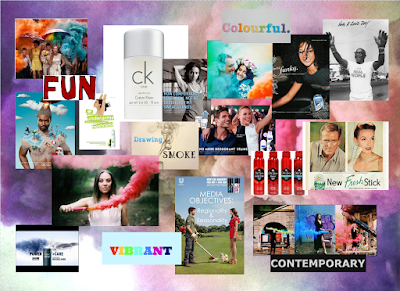The ASA
When creating a print advert to go on show in the public domain (in this case a film magazine) one must bear in mind the fact that any advert must not cause any offence as this will not only damage any message you're trying to put across, but also risk the removal of your advert altogether. The body in charge of ensuring no offensive advert is allowed to be displayed is the Advertising Standards Authority (ASA).
The ASA has an extensive list of rules and regulations regarding advertisements, with some of the key ones below:
Advertisements should not:
- Mislead viewers with false information
- Cause serious or widespread offence or harm
- Use shock tactics to promote their product
- Promote lotteries, gambling, betting, alcohol or smoking – disclaimers must be included in adult advertisements, for example “Please drink responsibly” at the end of alcohol adverts
- Be seen to favour particular political issues or parties
Advertisements should:
- Be appropriate for all ages before the UK's 9pm watershed
- Have clear and reliable evidence for claims made
- Show acceptance of diversity and promote equality
- Promote safety in all vehicle adverts eg. not using vocabulary such as 'fast' on a car advert and encourage the use of safety equipment on motorbikes
- Use royalty free or original music
Firstly, here is an example of a print advert that didn't meet the guidelines of the ASA and was removed after over five and a half thousand complaints.
The above advert was released by Paddy Power in 2014 and is based around the Pistorius/Steenkamp trial. It was removed due to the fact that it was making a mockery out of a serious murder trial with serious poor taste. It first of all encourages punters to bet on whether Pistorius would be found guilty and therefore trivialises the murder and turns it into something much less serious. It also puns on the fact that Pistorius cannot walk to not only insult him but also make a joke that he is/was guilty, something that is highly unprofessional for such a big company.
On the other hand, an advert that is very blunt and down to the wire whilst still remaining on the good side of the ASA's codes can prove very effective in communicating a message. For example, the above advert for the Pancreatic Cancer Action charity did receive a fair few complaints from the public, but the complaints were not upheld by the ASA as they were deemed irrelevant. This advert connotes how serious pancreatic cancer is by controversially saying that testicular cancer is much better. This received complaints as it could be seen that it is taking away from the severity of testicular cancer, however the statement really hits home (its desired outcome) as it makes any reader aware of how serious pancreatic cancer is, as a patient is shown to be 'wishing' to have testicular cancer. This oxymoron is very effective in creating a large impact, whilst remaining within the ASA guidelines.
Total Film Magazine
Total Film Magazine is a monthly British film magazine published by Future Publishing. It focuses on all things film-related, such as director interviews, reviews and exclusive 'sneak-peeks'. They have a core audience of 75% males of ages 18-35. The magazines film-focus why I will be referencing popular movie titles in each of my 4 adverts. For example in the advert set in Brick Lane, the caption will be "The Devil Wears Prada, but I wear Wave". This will appeal to the audience of Total Film magazine as it is a pun on a famous film title, whilst also tying in to the messages conveyed in the advert itself and thus reinforcing my brand. This is important as it will make my adverts humorous to the TA- who are "regular film goers".
This is crucial information to bear in mind as I will mostly have to appeal to the overlap between my own 16-25 year-old TA and Total Film's male-skewed 18-35 year-old audience.





















